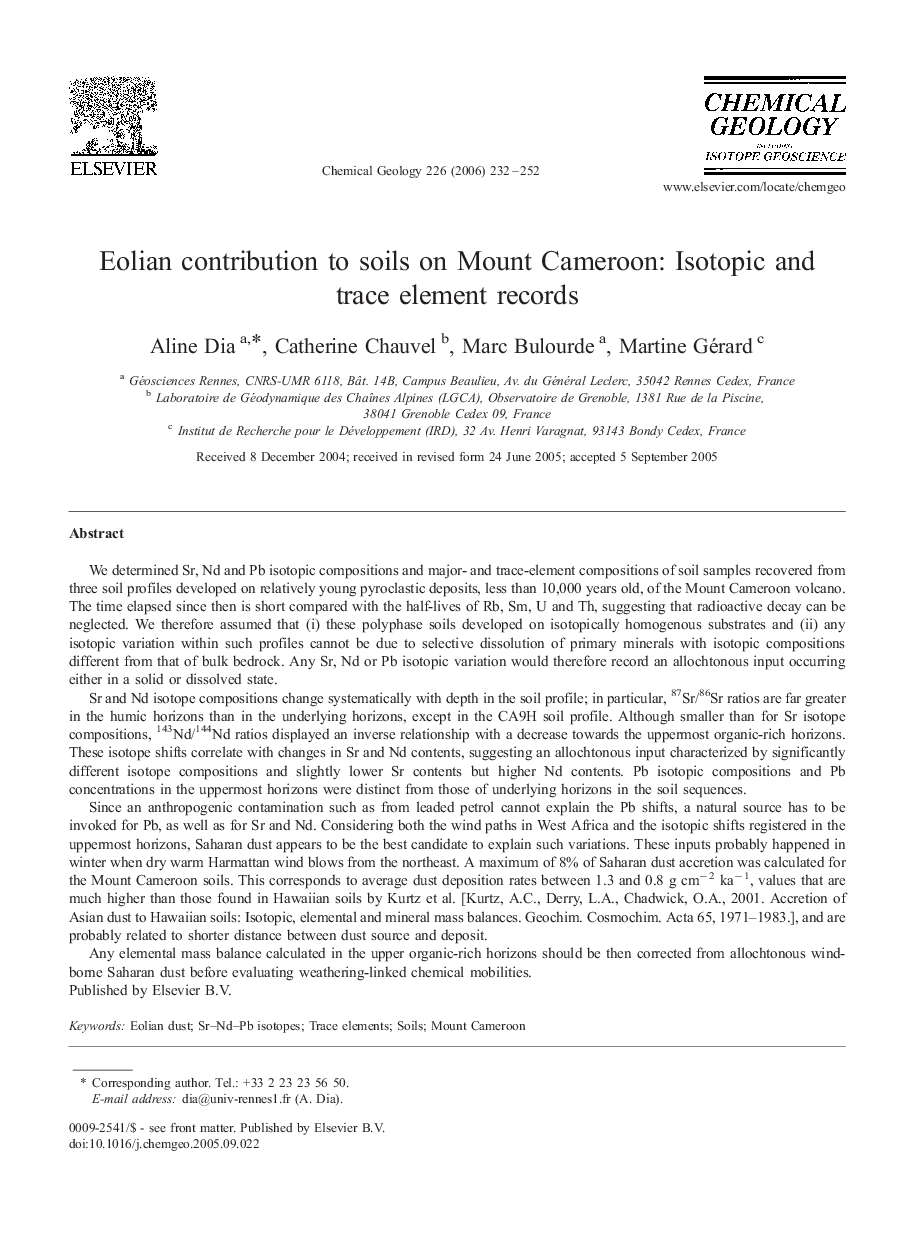| Article ID | Journal | Published Year | Pages | File Type |
|---|---|---|---|---|
| 4701211 | Chemical Geology | 2006 | 21 Pages |
We determined Sr, Nd and Pb isotopic compositions and major- and trace-element compositions of soil samples recovered from three soil profiles developed on relatively young pyroclastic deposits, less than 10,000 years old, of the Mount Cameroon volcano. The time elapsed since then is short compared with the half-lives of Rb, Sm, U and Th, suggesting that radioactive decay can be neglected. We therefore assumed that (i) these polyphase soils developed on isotopically homogenous substrates and (ii) any isotopic variation within such profiles cannot be due to selective dissolution of primary minerals with isotopic compositions different from that of bulk bedrock. Any Sr, Nd or Pb isotopic variation would therefore record an allochtonous input occurring either in a solid or dissolved state.Sr and Nd isotope compositions change systematically with depth in the soil profile; in particular, 87Sr/86Sr ratios are far greater in the humic horizons than in the underlying horizons, except in the CA9H soil profile. Although smaller than for Sr isotope compositions, 143Nd/144Nd ratios displayed an inverse relationship with a decrease towards the uppermost organic-rich horizons. These isotope shifts correlate with changes in Sr and Nd contents, suggesting an allochtonous input characterized by significantly different isotope compositions and slightly lower Sr contents but higher Nd contents. Pb isotopic compositions and Pb concentrations in the uppermost horizons were distinct from those of underlying horizons in the soil sequences.Since an anthropogenic contamination such as from leaded petrol cannot explain the Pb shifts, a natural source has to be invoked for Pb, as well as for Sr and Nd. Considering both the wind paths in West Africa and the isotopic shifts registered in the uppermost horizons, Saharan dust appears to be the best candidate to explain such variations. These inputs probably happened in winter when dry warm Harmattan wind blows from the northeast. A maximum of 8% of Saharan dust accretion was calculated for the Mount Cameroon soils. This corresponds to average dust deposition rates between 1.3 and 0.8 g cm− 2 ka− 1, values that are much higher than those found in Hawaiian soils by Kurtz et al. [Kurtz, A.C., Derry, L.A., Chadwick, O.A., 2001. Accretion of Asian dust to Hawaiian soils: Isotopic, elemental and mineral mass balances. Geochim. Cosmochim. Acta 65, 1971–1983.], and are probably related to shorter distance between dust source and deposit.Any elemental mass balance calculated in the upper organic-rich horizons should be then corrected from allochtonous wind-borne Saharan dust before evaluating weathering-linked chemical mobilities.
